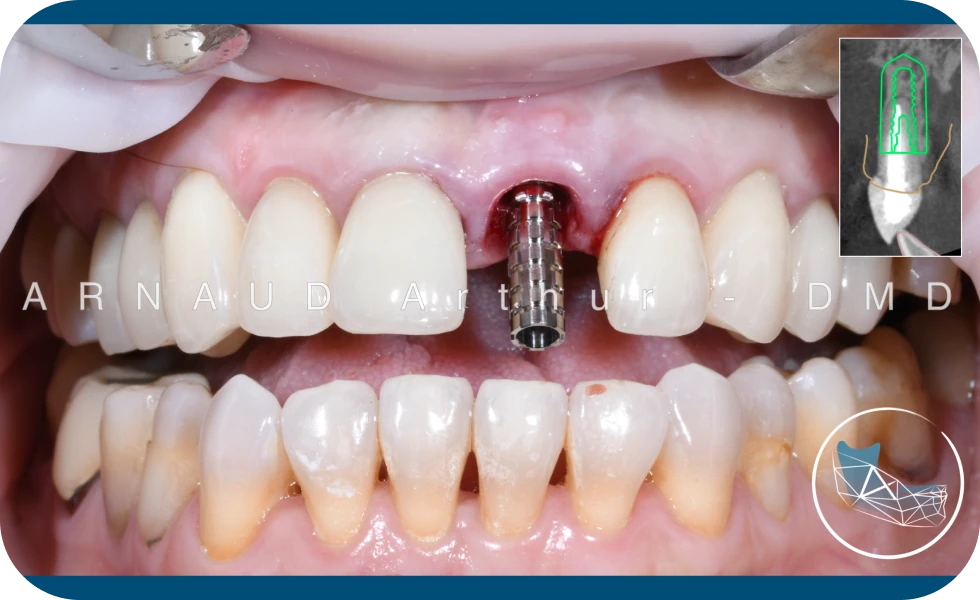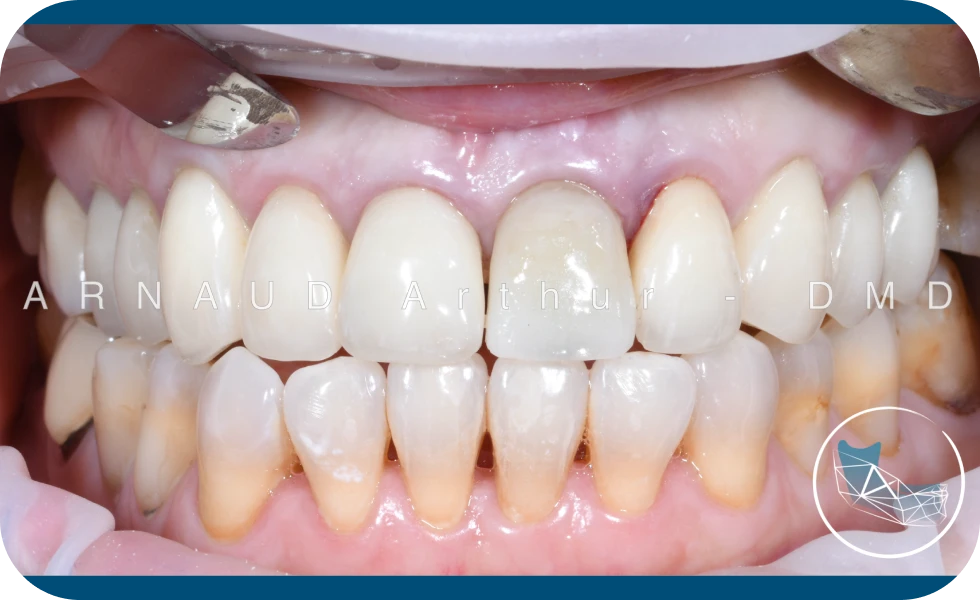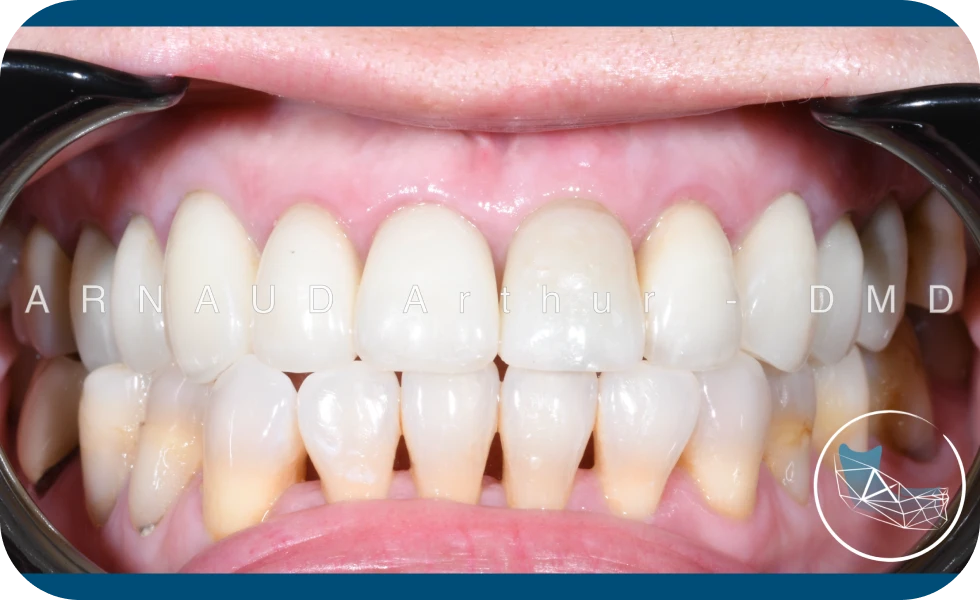Immediate loading
Immediate loading involves placing a temporary crown (made of resin, not ceramic) on the dental implant immediately after insertion. Unlike traditional methods, where patients have to wait between 3 and 4 months before the final crown is fitted, this protocol offers an immediate aesthetic solution, enabling the patient to leave with a functional, aesthetic and above all fixed temporary tooth the day after or even the day of surgery.
In many cases, it is also possible to carry out a complete treatment:
- tooth extraction,
- dental implant placement,
- immediate loading on the same day.
This protocol is reserved exclusively for anterior teeth (from premolars to incisors). In the case of molars, the pressure forces exerted are too great and represent an additional risk factor for failure. In this case, only tooth extraction and immediate implant placement are performed if the case is favorable.

What are the advantages of immediate loading?
- Instant aesthetic results: Patients leave with an aesthetic, fixed temporary tooth the same day, a significant advantage for those concerned about the appearance of their smile,
- Immediate functionality: The temporary crown allows you to speak and smile normally as soon as the implant is fitted,
- Reduce overall processing time and the number of visits required,
- Reduction in the number of surgical procedures (1 versus 2),
- Reduced post-operative pain and discomfort (as there are no incisions),
- Reduction of bone and gum resorption inherent in tooth avulsion.
What are the criteria for immediate loading?
Immediate esthetics in implantology is not suitable for all patients or all clinical situations. To guarantee the success of this protocol, several criteria must be met. Here are the main criteria to consider:
Bone quality and quantity :
- Sufficient bone volume: It’s essential that the jawbone is present in sufficient quantity to ensure good primary stability of the implant.
- Adequate bone density: The density of the bone must be such as to allow solid fixation of the implant as soon as it is inserted, minimizing the risk of micromovements that could compromise bone integration.
Gum condition :
- Gingival tissues must be healthy, with no signs of inflammation or periodontal disease.
- Gum thickness and shape: Thick, well-formed gums promote an optimal esthetic result and help mask the junctions between the temporary crown and the natural tissues (avoids black holes between teeth and prevents early implant loosening).
Primary implant stability :
- Immediate stability: The implant must achieve adequate primary stability at the time of placement. This depends on the quality of the bone and the surgical technique used.
- Absence of micromovements: During the initial healing phase, micromovements and pressure on the implant must be minimized to avoid osseointegration failure.
Temporary crown(s) :
- Prosthetic design: The provisional crown must fit snugly so as not to exert excessive pressure on the implant during healing.
- Aesthetics and functionality: It must be aesthetic to immediately restore the appearance of the smile, and functional to allow near-normal mastication.
Patient’s general health :
- Absence of untreated general pathologies: Patients must be in good general health, with no uncontrolled systemic diseases such as uncontrolled diabetes, which could interfere with wound healing.
- Smoking: Smokers have an increased risk of complications in oral surgery. Smoking cessation is strongly recommended before and after the procedure.
Patient engagement and oral hygiene
- Maintenance and follow-up: Like natural teeth, implants require professional maintenance. This is carried out by the dentist responsible for the restoration (crown or bridge) and the dental hygienist.
- Oral hygiene: Maintaining good oral hygiene around the dental implant is the best way to avoid long-term complications.



